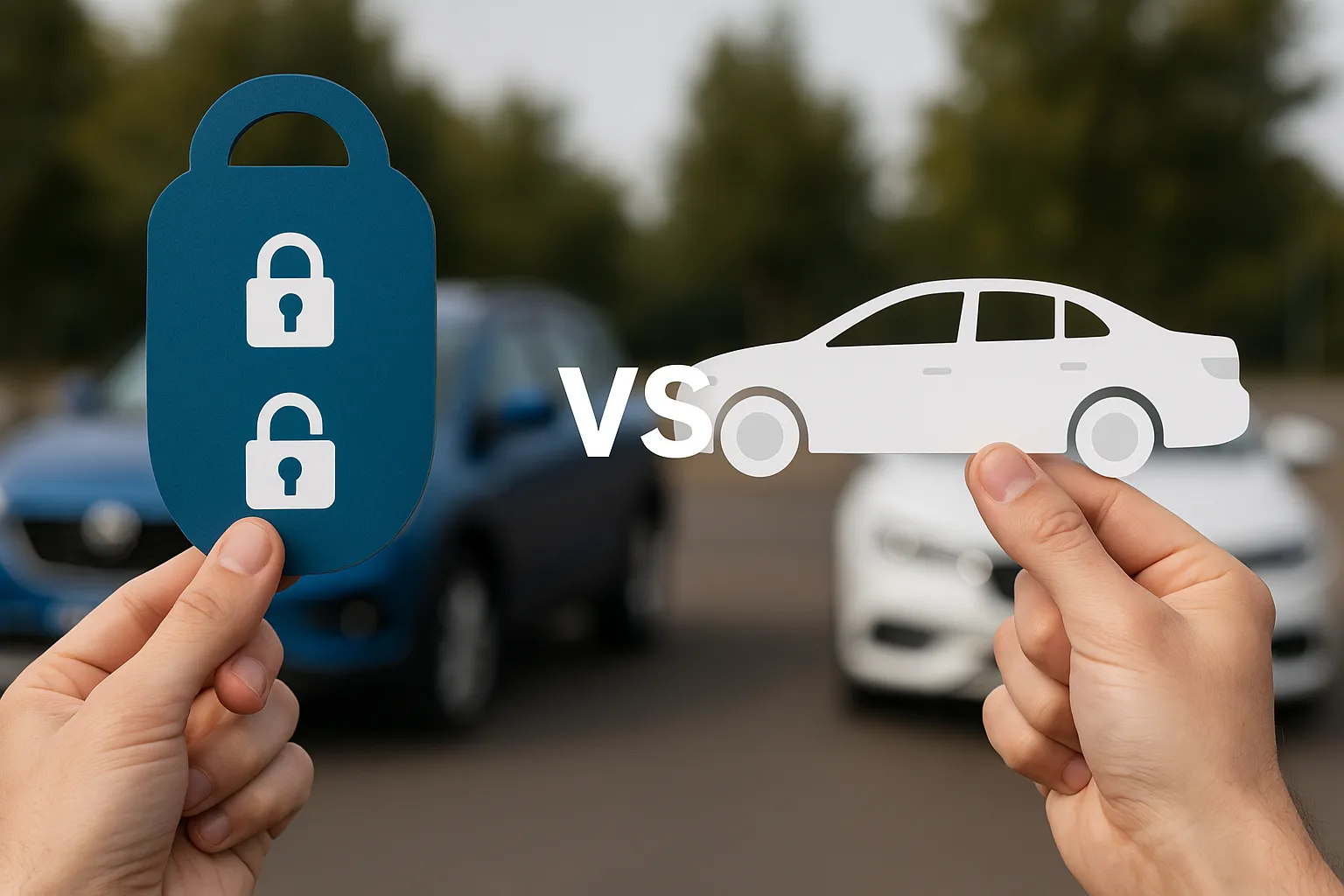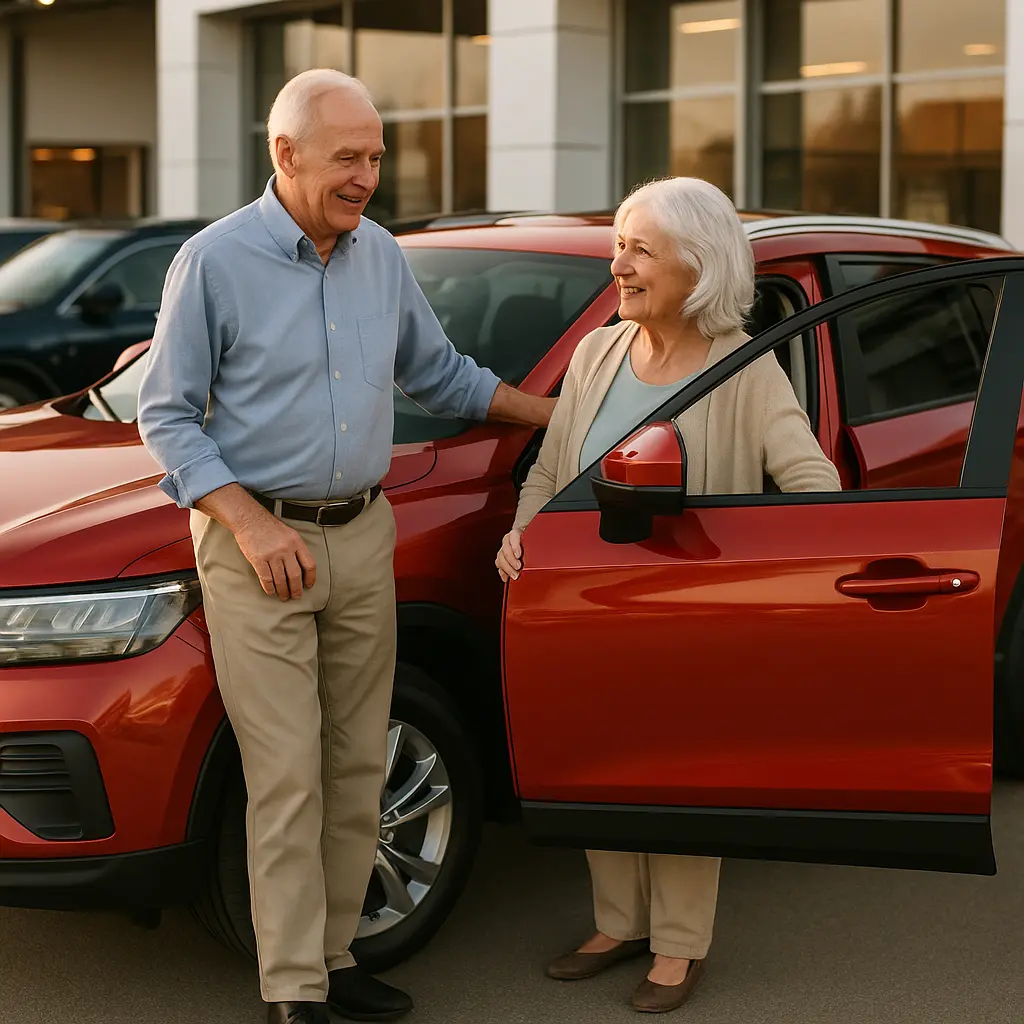In a world where flexibility is king and commitment is being redefined, the idea of car ownership is being challenged in Australia. Enter car subscription services—a newer way to access a car without buying or leasing one the traditional way. But is it better than simply buying a car, either new or used? Or is this just another automotive trend that sounds good in theory but costs more in the long run?
In this detailed guide, we’ll break down everything Aussie drivers need to know about car subscription vs buying in 2025. From the pros and cons to the financial implications, lifestyle suitability, and hidden costs, we’ve covered all angles.

1. What Is a Car Subscription?
A car subscription service is like Netflix for cars. You pay a recurring fee (usually weekly or monthly) and gain access to a vehicle without the responsibilities of ownership. It typically includes:
- Registration
- Insurance
- Servicing & Maintenance
- Roadside assistance
- Option to swap cars (in some services)
📌 Popular Car Subscription Providers in Australia
- Carbar
- Karmo
- HelloCars
- Subscribacar
- Motopool
- Some OEMs like Toyota, Volvo, and Hyundai also offer subscription services directly.
2. What Does Buying a Car Mean in 2025?
Buying a car—new or used—is the traditional path most Australians still follow. You either pay outright or finance it through a loan or novated lease. Once paid off, the vehicle becomes an asset (albeit a depreciating one), and you’re free to do what you like with it.
📊 Key Stats:
- As of 2025, nearly 86% of Aussies still prefer to buy or finance vehicles.
- The average car ownership period in Australia is 6.5 years.
- Ownership offers long-term savings but comes with upfront costs and ongoing responsibilities.
3. Cost Comparison: Subscription vs Buying
🧾 Subscription Costs
Typical subscription prices in Australia range between $140 to $400 per week, depending on the vehicle class. This may include everything except fuel.
Example:
- Mazda CX-5 via subscription: ~$300/week
→ $15,600 annually
→ Includes rego, insurance, servicing
🧾 Buying Costs (New & Used)
- New Mazda CX-5: ~$40,000 drive-away
→ $770/month loan over 5 years
→ ~$9,240 annually (excluding insurance, rego, etc.) - Used Mazda CX-5 (3 years old): ~$28,000
→ ~$600/month loan
→ Lower depreciation
Add-ons: Insurance (~$1000–$1800/year), servicing ($300–$800/year), rego ($700–$1000/year)
💡 Verdict on Costs:
- Short-Term (under 1 year): Subscription may be cheaper and more flexible.
- Long-Term (2+ years): Buying is almost always more cost-effective.
4. Pros and Cons of Car Subscription
✅ Pros:
- All-inclusive payments: One bill covers most expenses
- Flexibility: Swap vehicles as your needs change
- No long-term commitment
- Great for city dwellers or those unsure how long they’ll stay in one place
- No depreciation worries
- Try-before-you-buy potential
❌ Cons:
- More expensive long-term
- Limited vehicle availability compared to dealerships
- Mileage limits may apply
- You don’t own anything
- Customization not allowed
- Credit checks still apply
5. Pros and Cons of Buying a Car
✅ Pros:
- Ownership: Build equity in a tangible asset
- Freedom to modify, sell, or drive anywhere
- Cheaper over long-term
- Wider selection of models, trims, and colours
- Finance options available for all budgets
- Better suited for rural and long-distance driving
❌ Cons:
- Upfront costs (deposit, stamp duty, insurance)
- Depreciation starts the moment you drive away
- Long-term commitment
- Maintenance responsibility falls on you
- May not suit uncertain lifestyles
6. When Car Subscriptions Make Sense
✅ Ideal Scenarios for Subscription:
- You’ve just moved to Australia and need a car temporarily
- You want to test a model before committing to buy
- You need a second vehicle for a short-term project or holiday
- You don’t want to deal with insurance, servicing, or rego
- You’re in a major metro area with limited parking and public transport backup
- You change vehicles often for work/lifestyle
7. When Buying a Car Makes More Sense
✅ Ideal Scenarios for Buying:
- You drive long distances regularly (subscriptions often have km limits)
- You plan to own a car for 3+ years
- You want to customise your car (roof racks, wraps, tech mods)
- You live in rural areas where subscription services are limited or unavailable
- You want to resell later and recover some value
- You want more control over insurance, service providers, or extended warranties
8. Hidden Costs to Consider
🔍 Subscription Hidden Costs:
- Excess mileage charges
- Damage fees
- High cancellation charges
- Admin or joining fees
- Limited insurance cover (some providers have higher excesses)
🔍 Buying Hidden Costs:
- Stamp duty
- Dealer delivery fees
- Interest on car loans
- Out-of-warranty repair costs
- Roadside assistance (if not bundled)
9. Impact on Credit Score and Finance
- Subscriptions usually don’t build credit unless structured as a lease-like agreement.
- Car loans, if managed well, can improve your credit score.
- For younger buyers or temporary residents, subscriptions are more accessible.
10. Environmental Considerations
Car subscription services often include newer, lower-emission vehicles. That means:
- Better fuel economy
- Option to try hybrids or EVs
- Less carbon footprint (if regularly updated)
Buying, however, especially used, could contribute to longer vehicle life cycles and reduce waste if maintained well.
11. Resale Value & Depreciation
When you subscribe, depreciation isn’t your concern—but you don’t get the benefit either.
When you buy, you can recover some value when you sell—though cars typically lose 40–60% of their value in the first 5 years.
🚘 Example:
- Hyundai Tucson (New 2025): $40,000
- After 5 years (2029): ~$18,000 resale (if well-kept)
12. Car Subscription vs Buying – Quick Comparison Table
| Factor | Car Subscription | Buying a Car |
|---|---|---|
| Ownership | No | Yes |
| Upfront Cost | Low | High (deposit, stamp duty, etc.) |
| Monthly Cost | High | Moderate (with loan) |
| Included Services | Yes | No (pay separately) |
| Flexibility | High | Low |
| Long-term Cost | High | Lower overall |
| Credit Score Impact | Low | High (if financed) |
| Customisation | No | Yes |
| Resale Value | N/A | Yes (partial value recovery) |
| Availability (Australia) | Limited to metro areas | Nationwide |
13. Real-World Scenarios – Which One Wins?
🎯 Scenario 1: Sydney-based freelancer needing a car 3–6 months
Go with Subscription. Flexibility and no hassle.
🎯 Scenario 2: Young family in Brisbane with school runs and weekend trips
Buy a Used SUV. Cheaper in the long term and more versatile.
🎯 Scenario 3: Expat relocating for 1 year
Use Subscription. Minimal commitment and no need to deal with rego/insurance.
🎯 Scenario 4: Country tradesman driving 20,000 km a year
Buy a Ute. Subscription mileage limits would be costly.
14. What Do Aussies Think?
According to surveys by CarExpert and CarsGuide in early 2025:
- 67% of Aussies are aware of car subscriptions
- Only 9% have used one
- Top reason cited for using: “Hassle-free access”
- Top reason against: “Too expensive”
15. Future of Car Ownership in Australia
With the rise of EVs, autonomous cars, and city-based flexible lifestyles, subscriptions may become more common—especially for younger drivers. But full ownership isn’t going away anytime soon, especially for:
- Rural and regional Australia
- Families needing long-term reliability
- Buyers wanting to customise and control costs
Conclusion – Which Is Best for You?
There’s no one-size-fits-all answer. Car subscriptions are perfect for flexibility, zero-hassle access, and short-term use. But buying a car still wins for long-term affordability, customisation, and control.
If you’re unsure, you could start with a short-term subscription to test the waters—then buy when you’re ready.
Want More Help Choosing Your Next Car?
Check out our car reviews, comparison guides, and car finance tips at [carsoop.com.au] for up-to-date Aussie insights.
Let your next ride suit your lifestyle—not the other way around.
Leave a comment
Your email address will not be published. Required fields are marked *




















